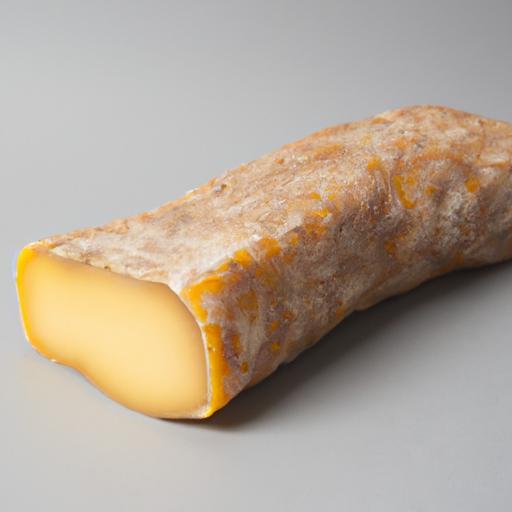There’s something undeniably magical about the smoky aroma that wraps around cheese, transforming it into a savory masterpiece. Yet, when you bite into that much-anticipated smoked cheese only to find it unexpectedly rubbery, the enchantment quickly fades. Why does this happen? Is your cheese betraying your taste buds? Fear not-behind that rubbery texture lies a delicate dance of science, technique, and timing. In this article, we’ll unravel the mystery of rubbery smoked cheese and share expert tips to help you achieve that perfect, melt-in-your-mouth texture every time. Get ready to elevate your smoked cheese experience from chewy disappointment to creamy delight!
Why is my smoked cheese rubbery? This common question often frustrates both home cooks and seasoned smokehouse artisans aiming for that perfect, melt-in-your-mouth slice with a delicate smoky aroma. Understanding the intricate balance of temperature, timing, and cheese composition ignites the path to transforming ordinary smoked cheese into a silky, flavorful delight. Let’s delve into the science that impacts cheese texture and uncover expert tips that guarantee a smooth, creamy result every time you fire up your smoker.
Prep and Cook Time
- Preparation: 10 minutes
- Smoking Time: 1 to 3 hours depending on cheese type
- Resting Time: Minimum 24 hours post-smoking for flavor development
Yield
Yields approximately 8 servings (based on 1 lb cheese block)
Difficulty Level
Medium – Requires attention to temperature control and timing, but beginner-friendly with these step-by-step instructions.
Ingredients
- 1 lb block of semi-hard cheese (e.g., Gouda, Cheddar, or Monterey Jack)
- Wood chips for smoking (preferably hardwood like applewood or hickory)
- Salt (optional for extra flavor)
- Cheese mat or rack for smoke circulation
Instructions
- Select an appropriate cheese – Opt for semi-hard varieties to reduce the risk of rubberiness; softer cheeses tend to melt too quickly, while very hard cheeses may crack.
- Prepare your smoker – Maintain a steady temperature of 75°F to 90°F (24°C-32°C) for the smoking process. Temperatures above 90°F cause the fat within the cheese to liquefy unevenly, contributing to a rubbery or greasy texture.
- Soak wood chips in water for 30 minutes to minimize direct flames and encourage cold smoking.
- Place cheese on a clean rack or mat allowing smoke to circulate evenly around the block, preventing moisture build-up which can toughen texture.
- Smoke the cheese for 1 to 3 hours depending on desired smokiness. Longer smoking increases flavor but may require additional drying time.
- Remove cheese and wrap loosely in parchment paper; then refrigerate for at least 24 hours. This resting period allows smoke compounds to fully absorb and the texture to mellow into a creamy finish.
Tips for Success: Expert Advice on Achieving Smooth, Creamy Smoked Cheese
- Avoid high smoking temperatures; elevated heat is the primary culprit behind why smoked cheese can turn rubbery. Consistent low-temperature cold smoking is your friend.
- Use cheeses with a moderate moisture content. Overly dry cheeses may crack, while too moist cheeses risk becoming spongy or rubbery.
- Experiment with shorter smoking times combined with longer resting periods to enhance texture without overpowering smoky notes.
- If you’re pressed for time, try wrapping cheese in cheesecloth post-smoking to draw out excess moisture gently.
- Always slice smoked cheese thinly to appreciate its creamy texture better; thick slices can feel dense or rubbery on the palate.
Serving Suggestions
Present smoked cheese on a rustic wooden board paired with crunchy artisan breads, fresh figs, and a drizzle of honey or tangy chutney. Garnish with fresh herbs like rosemary or thyme to elevate both aroma and appearance. For an indulgent creaminess, melt smoked cheese over grilled sandwiches or blend into creamy dips, ensuring you delight in the velvety texture perfected through careful smoking.
| Nutrient | Per 1 oz (28g) |
|---|---|
| Calories | 110 |
| Protein | 7g |
| Carbohydrates | 1g |
| Fat | 9g |

For deeper insight into the art of smoking techniques, check out our article on Cold Smoking Cheese Like a Pro and consult the UC Davis Food Science research on dairy texture and moisture control.
Q&A
Q&A: Why Is My Smoked Cheese Rubbery? Tips for Perfect Texture
Q1: Why does my smoked cheese turn out rubbery instead of creamy and tender?
A1: Rubbery smoked cheese often results from overexposure to heat or improper smoking techniques. High temperatures can cause the cheese proteins to tighten and squeeze out moisture, leaving behind a tough, elastic texture rather than a smooth, luscious bite.
Q2: Can the type of cheese affect the final texture when smoked?
A2: Absolutely! Some cheeses, like mozzarella or young gouda, have higher moisture content and a delicate structure that can become rubbery if smoked too aggressively. Firmer cheeses like aged cheddar or firm provolone are often more forgiving and develop a pleasant texture when smoked properly.
Q3: What temperature should I aim for when smoking cheese to avoid rubberiness?
A3: Low and slow is the golden rule. Ideally, keep your smoking temperature under 90°F (32°C). Temperatures above this threshold start melting the cheese, changing its structure and causing that unwanted rubbery feel.
Q4: How long should I smoke cheese to get flavor without ruining the texture?
A4: Aim for 2-4 hours of cold smoking depending on the cheese’s size and your flavor preference. Longer smoking can risk drying the cheese out, while too little time might not impart enough smoky character.
Q5: Does brining or curing the cheese beforehand help with texture during smoking?
A5: Pre-treatments like light brining or hanging cheese to form a slight rind can help regulate moisture loss during smoking, potentially improving texture. However, these steps require careful timing-too much salt or drying can make the cheese tough and rubbery too.
Q6: Are there post-smoking steps to improve or salvage rubbery cheese?
A6: If smoked cheese turns rubbery, letting it rest at room temperature for a bit can sometimes soften it up. Alternatively, using it in dishes where melting is involved-like grilled sandwiches or mac and cheese-can transform the texture into something delicious.
Q7: Any expert tips to achieve perfect smoked cheese texture every time?
A7: Yes! Use a dedicated cold smoker or a smoking method that keeps temps low. Always start with high-quality, well-aged cheese. Monitor moisture levels-too dry means rubbery; too wet means gooey. Experiment with shorter smoking times and smaller cheese portions. Most importantly, patience and practice are your best friends!
With these insights, your next batch of smoked cheese can be a tender, flavorful masterpiece-never rubbery again!
Insights and Conclusions
In the end, achieving that perfect slice of smoked cheese-firm yet tender, with a melt-in-your-mouth texture-comes down to understanding the delicate dance between smoke, moisture, and aging. Rubberiness isn’t a flaw; it’s a signpost guiding you toward better technique and sharper attention to detail. By controlling your smoking time, temperature, and storage methods, you can transform your cheese from a rubbery afterthought into a smoky masterpiece that delights every bite. So next time you light up the smoker, remember: a little patience and care will turn your cheese into a texture triumph worthy of any cheese board. Happy smoking!


